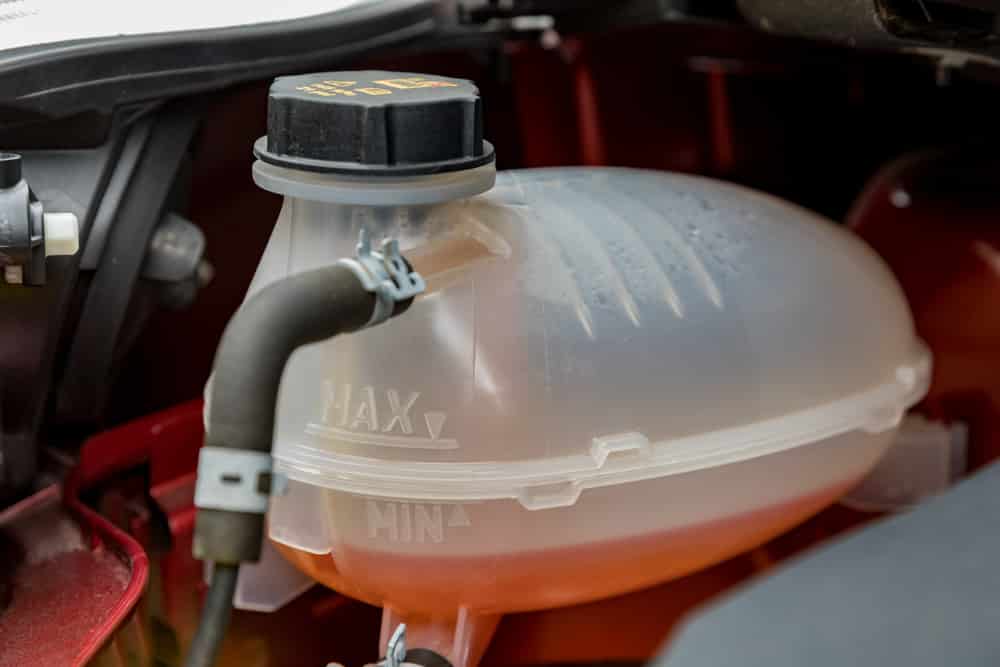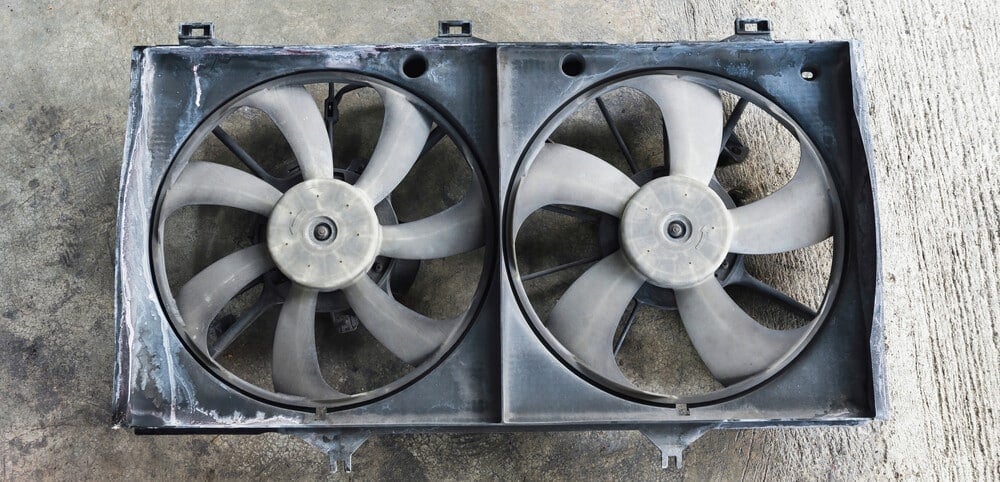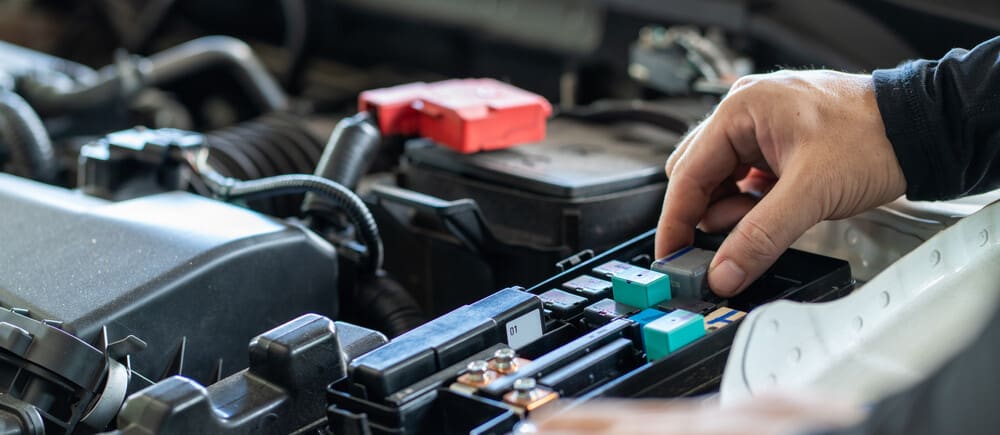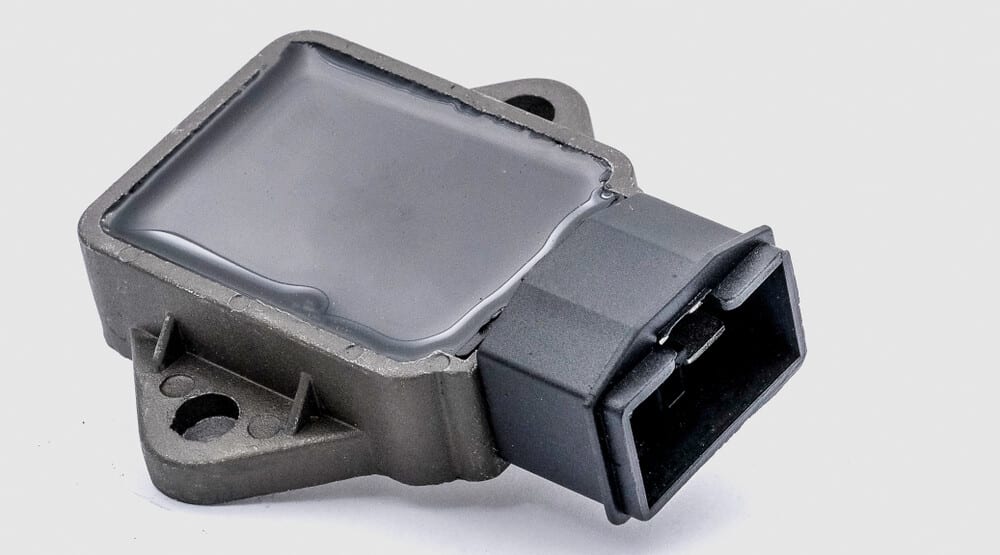R rpghorrorstories Never Giving Up the Gm Screen Again
You lot probably already know the purpose of the radiator and the cooling organization in your motorcar.
When yous are driving fast, the wind passes through the radiator to cool the coolant down without bug, but when you are driving slow, no wind is pushed through the radiator. This is why we utilize a radiator fan.
Unfortunately, the radiator fan can fail and will cause your machine to overheat.
What causes the radiator to end working?
The almost mutual reasons a radiator fan is not working are luckily due to a diddled fuse, bad relay, or a broken wire. It can also exist caused by a faulty coolant temp sensor, depression coolant level or the fan itself can be damaged.
While these are some of the reasons, it is not all of them. Hither is a more detailed listing of the virtually common causes of a radiator fan not coming on:
seven Reasons Why Your Radiator Fan is Not Working
1. Blown Fuse

A fuse supports almost everything electric in a car. If there is an electrical surge going towards a piece of electronic equipment, the fuse cuts the electric supply to that particular equipment saving it from devastation. This is what we telephone call a blown fuse.
A blown fuse is no big deal, and changing one does not cost a lot of money. If your auto's radiator fan is non-functional, check your car'southward user manual and locate the fuse for the radiator fan controller or the fan.
The fan itself oftentimes uses a large fuse of effectually 50A, while there might also be a split up small fuse to the fan control module. Recollect that if the fan fuse is diddled – at that place might be a trouble with the wirings or the radiator fan.
2. Faulty Coolant Temperature Sensor

There are often 2 different systems in different car models. Either your fan control is integrated into the engine control unit of measurement, or y'all take a carve up fan control module. In both cases, the control units use a temperature sensor to know when to beginning the radiator fan.
If this temperature sensor is broken, the control unit will not know when to start the radiator fan.
Some cars use split engine coolant temperature sensors for the radiator fan and the engine command unit of measurement.
You need to cheque your repair manual of which temperature sensor controls the radiator fan then resistance-measure the sensor with a multimeter to ensure it is functional.
three. Broken Wiring or Bad connection

If the fan is not working even when the car is overheating, at that place might be a wiring issue or a bad connectedness.
Cheque the wirings going to the radiator fan from the command unit or relay. Check in the connector plugs for any signs of corrosion. Also, check the connector plugs at the relay and command unit of measurement.
Measuring the wirings with a multimeter is often not very constructive, as you demand to put a load on the wires to see if they are functional. Notwithstanding, every bit a fast test, you can check with a multimeter if power is coming to the radiator fan.
4. Insufficient Coolant

If your coolant level is low, there is a adventure that you will get air in the system, and the coolant temperature sensor will non read the coolant temperature correctly. If the coolant level is low, y'all need to refill the coolant to optimum levels.
Failing to do and so could take chances your engine condign overheated and seized. There is no coming dorsum from a seized engine unless you are willing to spend a lot of money.
5. Broken Radiator Fan

When your radiator fans are not coming on, information technology can besides be caused past faulty radiator fans. The radiator fans have electrical motors inside of them, which will wearable out after some years.
Yous tin test the electrical radiator fans by taking a wire from the car battery, unplug the radiator fan connector, and put 12v+ and ground into the connector. This is the fastest and easiest way to test your radiator fans.
6. Faulty Fan Relay

Because the radiator fan is often drawing so much power, in that location is frequently a relay powering the coolant fan. Of form, this relay can get damaged, which will crusade the radiator fan to not coming on.
The fan relay is often located in the engine bay's fuse box, just the all-time style is to cheque your repair manual to find where it is located.
Testing a four pin relay is oftentimes very straightforward. Remove the relay and requite 12 volts to pin 30 and 85. Ground pin 86 and bank check if at that place is voltage coming out from pin 87. Information technology is even better to connect pin 87 to something that draws a lot of power, similar the fan, for example.
seven. Bad Fan Controller Module

As I discussed before, some cars take a split up control module for but the radiator fan control. This command module is often installed in the engine bay, exposed to oestrus and dust. This can make the control module fail after a while because of corrosion.
Locate the relay and check for any visual amercement outside of it. You tin can often also open upwardly the relay and bank check for whatsoever bad solderings or corrosion. Supervene upon it if you see whatsoever problems.
palmieriprood1944.blogspot.com
Source: https://mechanicbase.com/electric/radiator-fan-is-not-coming-on/
0 Response to "R rpghorrorstories Never Giving Up the Gm Screen Again"
Post a Comment